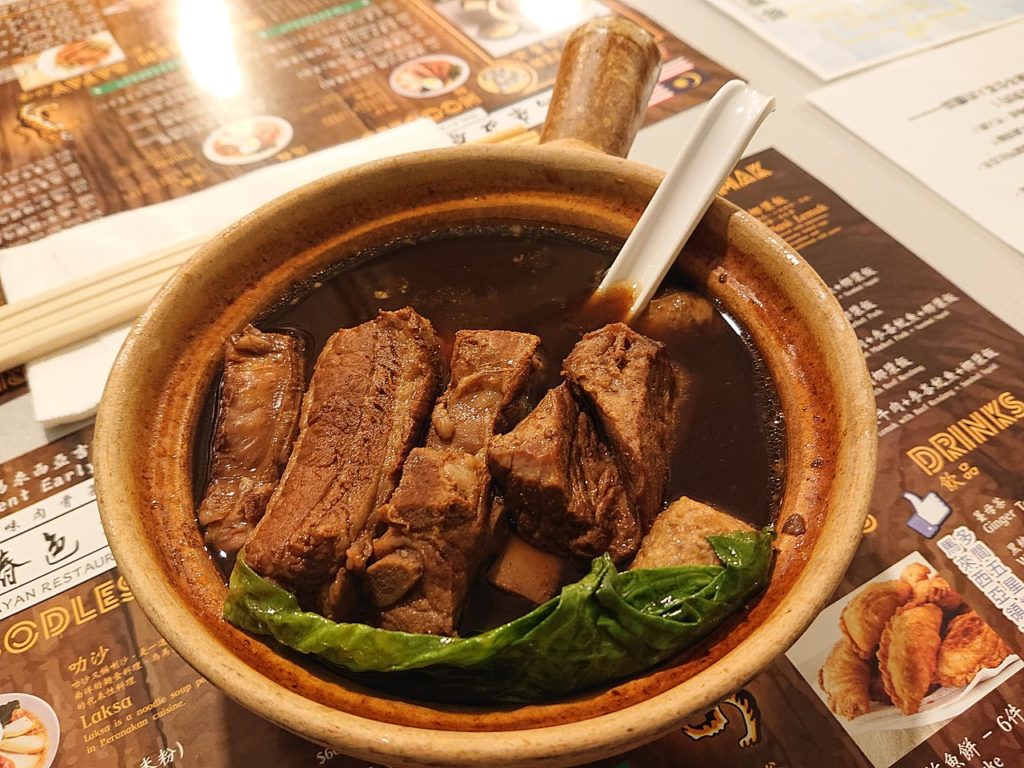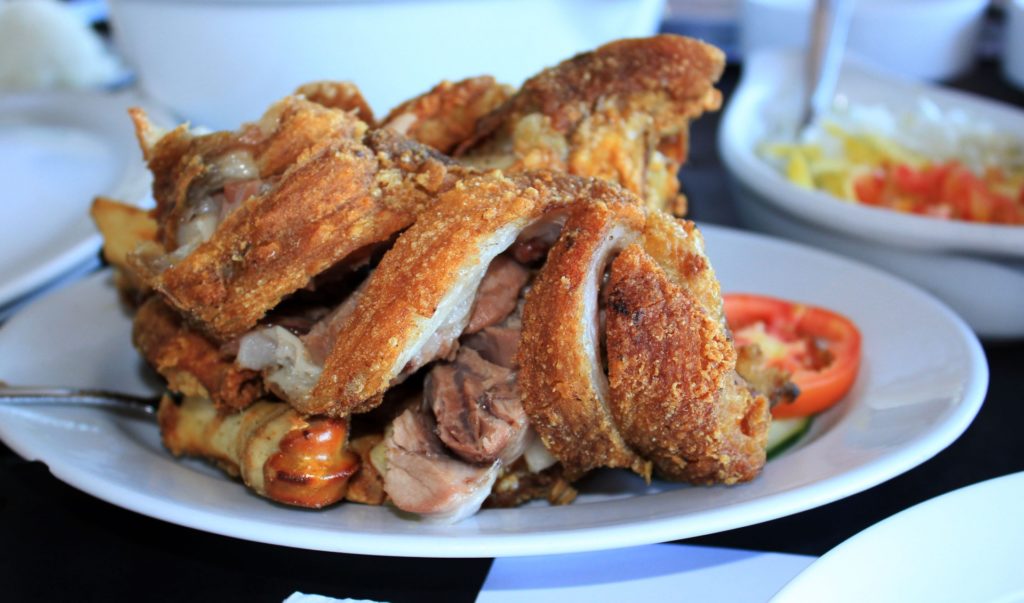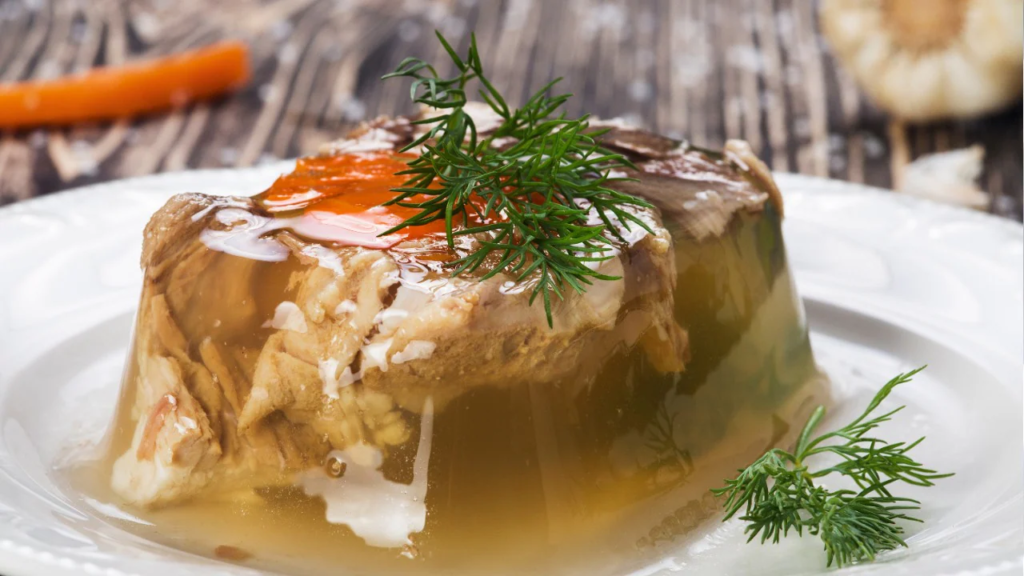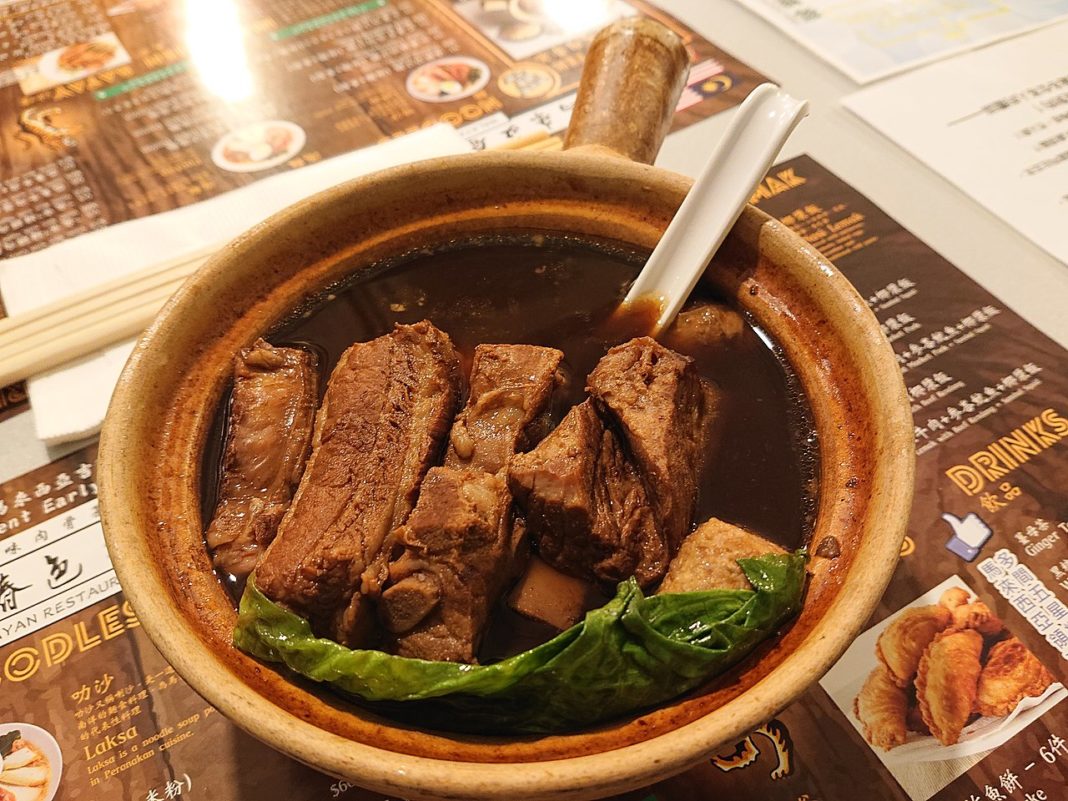And in this part of the world, not a single part of the pig goes to waste. You will find a plethora of porky faves from fiery hot curries and herb-flecked sausages to smokey grilled offerings that make use of different parts of the hog.
Bak kut teh
Translated as “pork bone tea” in Hokkien, this dish of pork cuts cooked in a hearty, herbal, savoury broth is a Malaysian favourite.
The broth is made by simmering pork ribs with a hodgepodge of aromatics, spices and Chinese herbs including star anise, cinnamon, dong quai (Angelica sinesis) and goji berries.
 There are several variations of bak kut teh in Malaysia, ranging from the dark, rich, herbaceous Hokkien classic to the Teochew version – a light broth brimming with peppery flavours.
There are several variations of bak kut teh in Malaysia, ranging from the dark, rich, herbaceous Hokkien classic to the Teochew version – a light broth brimming with peppery flavours.
Often filled with pork belly, ribs, offal and trotters, as well as tofu puffs, enoki mushrooms and lettuce, bak kut teh is enjoyed with fluffy hot white rice, crunchy strips of fried dough or you char kuay, and condiments like minced raw garlic and chillies.
Pork laab
For the people of Laos, laab – a dish of minced meat stir-fried with an assortment of fresh herbs – is a symbol of good luck.
Eaten with sticky rice, this national dish can be found all over the country, with variations using beef and fish laab, but a hot favourite is pork laab.
 Minced pork is stir-fried with a simple but flavourful combination of sugar, padaek or Laotian fermented fish sauce, lime juice and ground toasted rice which gives the dish a nutty flavour.
Minced pork is stir-fried with a simple but flavourful combination of sugar, padaek or Laotian fermented fish sauce, lime juice and ground toasted rice which gives the dish a nutty flavour.
Herbs like chopped cilantro, mint, makrut lime leaves and shallots, as well as scallions and green bird’s eye chillies are then tossed in with the fried meat for a fresh, herbaceous kick.
Crispy pata
Some of Southeast Asia’s best pork dishes hail from the Philippines, but the most decadent of porcine offerings here is crispy pata or deep-fried pork knuckle.
To make this dish, the knuckle is first brined with spices like whole peppercorns, bay leaves, cloves of garlic and star anise to infuse the meat with flavour while tenderising the fatty, sinewy front shank.
 The knuckle is then removed from the brine and left to dry before it is massaged with salt and placed in a vat of boiling hot oil.
The knuckle is then removed from the brine and left to dry before it is massaged with salt and placed in a vat of boiling hot oil.
The result is a hearty offering of pork knuckle with crispy, crackling skin and succulent, fatty, gelatinous meat inside.
It is served alongside rice and an aromatic, tangy dip of crushed garlic, minced onions, soya sauce and vinegar.
Thit dong
This jelly-like North Vietnamese dish of pork aspic is a must-have during the Vietnamese Lunar New Year or Tet.
Traditionally, pork trotters and pig ears, known for their high collagen content, are marinated with fish sauce, sugar, white pepper and garlic before being lightly pan-fried and stewed with ginger, shallots, fish sauce and dried wood ear fungus.
 The meat is then arranged neatly in a container and crowned with thinly-sliced carrots, while the stewing broth, strained and sieved, is poured into the same container to cover the meat, and then refrigerated to set.
The meat is then arranged neatly in a container and crowned with thinly-sliced carrots, while the stewing broth, strained and sieved, is poured into the same container to cover the meat, and then refrigerated to set.
Modern recipes call for the usage of pork butt, prized for its intense fat marbling, along with unflavoured gelatin slices to produce the aspic.
Encased in a layer of gelatinous aspic, this cold dish with a savoury kick is served alongside pickled mustard leaves and pickled bulbs of garlic or green onions, and eaten with freshly cooked white rice.
Sai ua
Spicy, smokey and herbaceous, this pork sausage from northern Thailand is one of Chiang Mai’s most popular street eats.
The vibrant flavour of the sausage comes from a spice blend called kaeng khua, which is added to a mix of minced pork, julienned kaffir lime leaves, scallions, and finely chopped coriander leaves and stems.
 The kaeng khua, which includes pounded dried red chillies, fermented shrimp paste, shallots, garlic, lemongrass, turmeric, kaffir lime zest and a drizzle of fish sauce, really elevates this dish.
The kaeng khua, which includes pounded dried red chillies, fermented shrimp paste, shallots, garlic, lemongrass, turmeric, kaffir lime zest and a drizzle of fish sauce, really elevates this dish.
The fragrant mince mix is then left to marinate overnight before being stuffed into sausage casings made out of pig intestines, and grilled over a charcoal fire.
According to airasia.com














